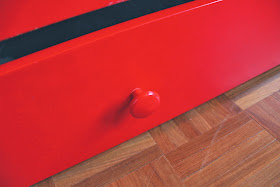Last summer we got her a pair of rubber boots with pictures of owls all over them. That was simply love at first sight. Those boots go by a name "Hu Huu" (eng. "wo hoo") and she still insists on wearing them on a daily basis. Ever since, she has also been pointing out all the possible owls in TV, magazines and books. Practically, no owl can escape Sofi's radar.
 |
| A bird just flew into our house |
Inspired by Sofi's exhaustless interest on owls we were not able resist when Pekka ran across a very special item in a internet auction a little while ago. It is ceramic wall plate, designed in 1960 by an artist Raija Uosikkinen (1923-2004) for a Finnish manufacturer Arabia. With dimensions of 295 x 295 mm and weight of 2.6 kg, this intriguing mid century wall piece features a hand drawn picture of an owl. The plate is actually part of a larger collection called "Linnut" (eng. "Birds") illustrating a series of different birds such as an eagle, a capercaillie, and an owl grouped with other bird species.
 |
| Hu Huu! |
The plate has been signed by the artist in the lower right corner next to the manufacturer's name. During 1947-1986, Uosikkinen had a long career at Arabia working as a decorative artist and collaborating for example with such characters as Kai Franck. One of her most famous creations is the Kalevala collection.
So let's see how enduring Sofi's fascination on owls turns out to be in the long run. At the moment, the ceramic plate is just another painted animal feeding her imagination and boosting learning, but perhaps with time she also grows to appreciate the artistic attributes of her Hu Huu. Actually, it could be much sooner than we think. After all, these little people have proven themselves as extremely fast learners!
Oh, and already on the first night when the owl arrived, Sofi did not forget to wish Hu Huu a good night before going to bed. Ranking quite high on the scale importance, isn't it?
Oh, and already on the first night when the owl arrived, Sofi did not forget to wish Hu Huu a good night before going to bed. Ranking quite high on the scale importance, isn't it?



































